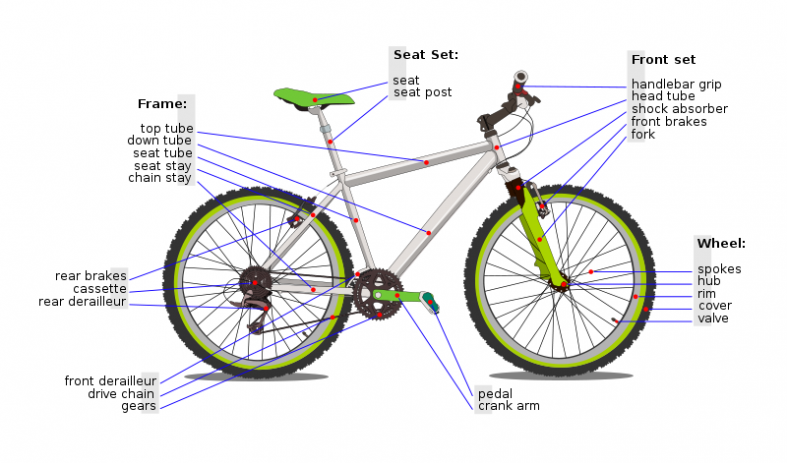13 July 2013

Remember your first lesson on riding a bike? Studying the vocabulary words like "rear derailleur" and "crank arm?" Remember spending hours going over proper gear changes for hilly rides? Do you remember? You don't!? Well, its probably because mastering your first bike ride is something you did through experiential learning, like most of us. The diagram above is what you might see if riding a bike was something learned in the classroom today. Teacher tells you the facts, figures and vocabulary. You go away and memorize it, come back, regurgitate what the teacher said on to a piece of paper and, voila, you are now a scholar of 'Bike Riding 101.'
Experiential learning is vastly different from a Teacher-centered learning environment (4 rows of 5 desks, teacher at the front reciting from a text book) because it is attached to emotion. Falling off of a bike was never more frustrating and maddening until that moment when you finally found the balance and cranked the bike another 20 ft before stopping with pure joy and elation. Let's bring that emotional attachment back into the classroom, move the desks and chairs to the side and get our hands dirty in "doing." Lest we forget that "doing" gives us a 75% chance at learning retention. When was the last time you forgot how to ride a bike?
The impact that experiential learning can make is indelible. I invite you to watch this video made in 1970. Teacher Jane Elliot, uses the color of her student's eyes to recreate the variables of racism while teaching them about "brotherhood." This video is eye-opening, inspiring, innovative beyond it's years and worth every moment of watching.
Lesson learned aside, you can see the raw emotion that the students were experiencing. I am confident in saying that these students will never forget what it "felt like" to have learned that lesson. Not only does emotion and experience intensify the learning moment, but as we see here, a learner's emotional state can effect their ability to retain and share knowledge. Students who were declared as the "lesser" completed their vocabulary activity in more time than they did the previous day when they were considered the "better" of the two populations. Sure, not every lesson is going to lend itself to experiential learning, but this brave teacher knew that when a lesson needs to be carried on throughout life it must have two things- emotion and experience.
Finally, how prepared were you when you started your first job right out of high school or college? Would you have considered yourself a professional? Did you find that you had to get an internship even after college or start at a lower-level job to gain the experience you needed be the professional you hoped to one day be?
Internships are a watered down version of apprenticeships, in which men and women at a young age would start working in their field of choice. They weren't running for coffee or filing paperwork. They were watching and learning from Masters of their Craft, while actually experiencing the environment, necessary skills, nuances of the craft and details of their audience and market in order to be a professional. Nine hours a day, every day at an apprenticeship would get you to Gladwell's "10,000-hour rule" in 4 years. That's the same amount of time as college... and probably much cheaper.
Let's connect learning with our passion and emotion. Let's get knowledgeable professionals into the workplace. Let's experience an education that leaves us with memories and not a catalogue of filed information in our brains.
...I don't know, to me, the concept seems as easy as riding a bike.